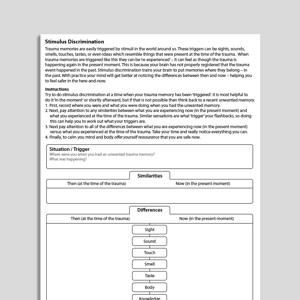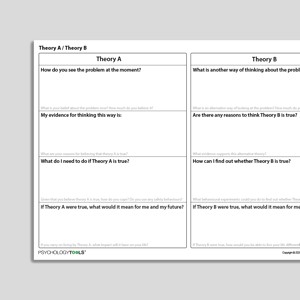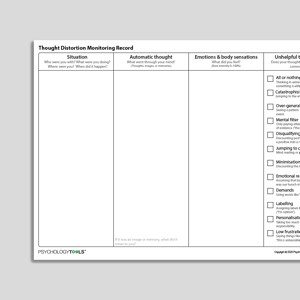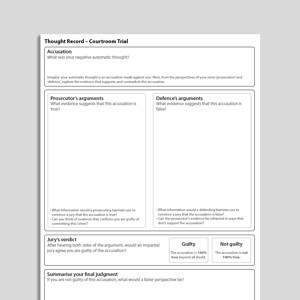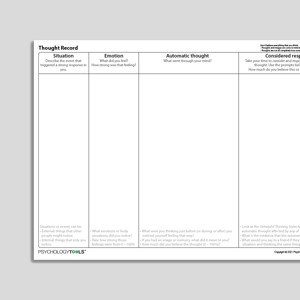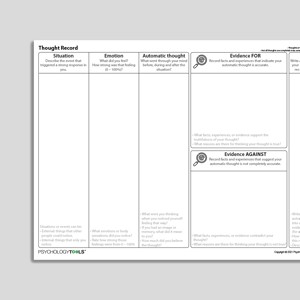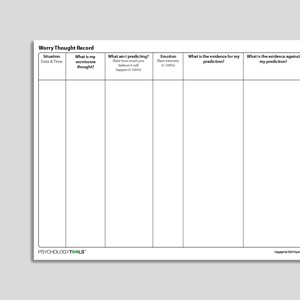Cognitive Behavioral Therapy (CBT)
Cognitive behavior therapy (CBT) is a popular form of psychological therapy that works with our thoughts, feelings, and behaviors. CBT is an integration of principles from behavior therapy with theory and methods from the cognitive therapies developed by Aaron Beck and Albert Ellis. The CBT that is practiced today has evolved with new developments in basic and applied research; it is grounded in empirical research and clinical practice. CBT is a broad church: the family of ‘cognitive and behavioral therapies’ encompasses many approaches including cognitive therapy, acceptance and commitment therapy (ACT), dialectical behavior therapy (DBT), and compassion-focused therapy (CFT).
Beck’s cognitive model identifies different levels of human cognitions: automatic thoughts are the most superficial level of cognition and describe the thoughts, words, ideas, and images that seem to pop into our minds; rigid and over-generalized core beliefs about ourselves, the world, and other people; and intermediate attitudes, rules, and assumptions that are influenced by our core beliefs. The cognitive model proposes that how we feel emotionally, and how we act, are determined by how we interpret and think about a situation. It argues that psychological problems and disorders are the result of dysfunctional thinking, and are maintained by self-defeating behavior influenced by inaccurate beliefs. Cognitive behavior therapists understand that by changing the way we think and act in the here-and-now we can change the way we feel, and CBT often begins with a focus on what is maintaining a problem in the present. For lasting change, CBT therapists often work with the deeper levels of their client’s beliefs and assumptions. Read more
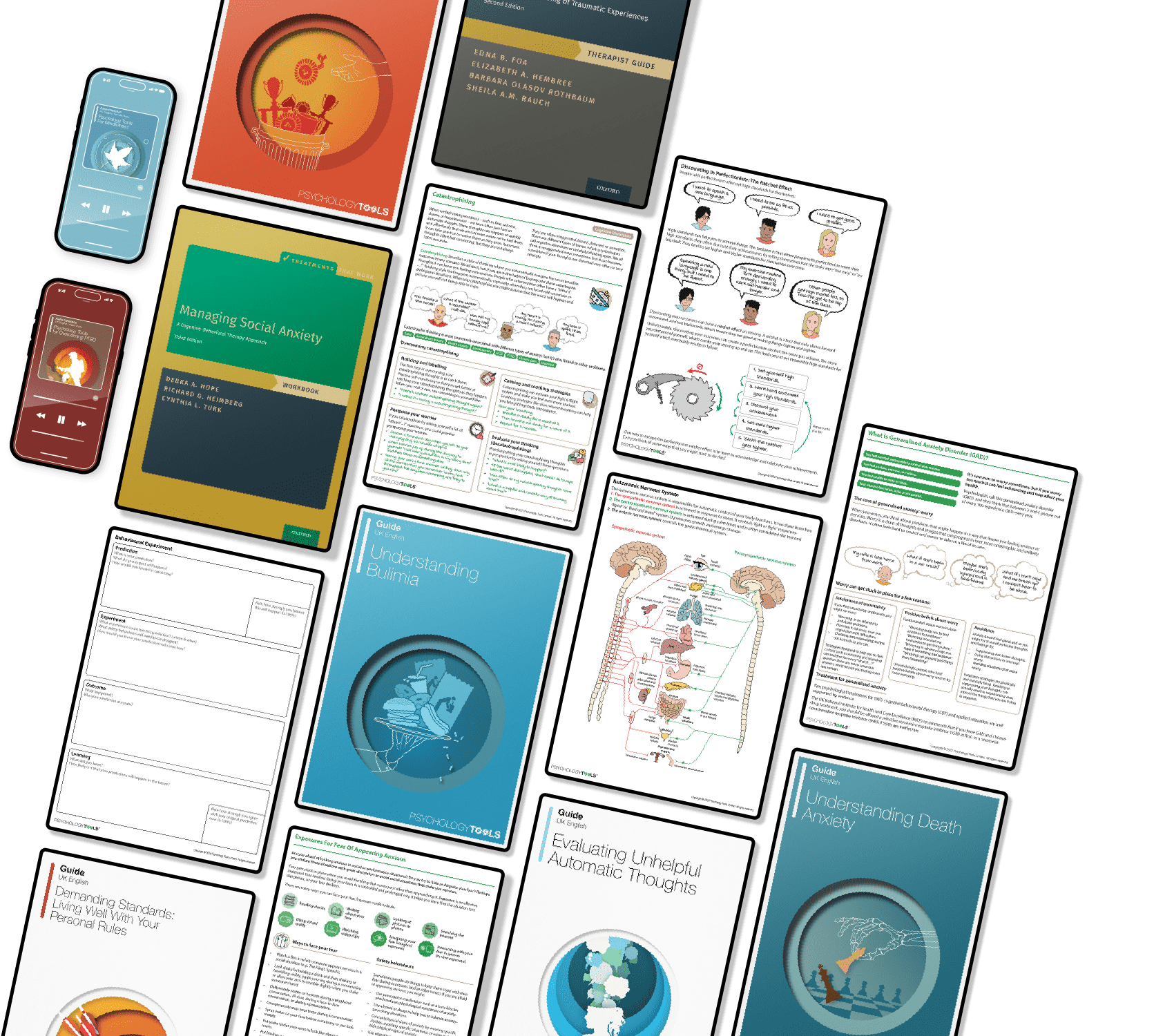
92 of 292 resources
Self-Blame
The Self-Blame information handout forms part of the cognitive distortions series, designed to help clients and therapists to work more effectively wi ...
https://www.psychologytools.com/resource/self-blame
Self-Criticism - Self-Monitoring Record
Developing self-monitoring skills teaches clients to systematically observe and record specific targets such as their own thoughts, body feelings, emo ...
https://www.psychologytools.com/resource/self-criticism-self-monitoring-record
Self-Monitoring Record (Universal)
Developing self-monitoring skills teaches clients to systematically observe and record specific targets such as their own thoughts, body feelings, emo ...
https://www.psychologytools.com/resource/self-monitoring-record-universal
Simple Thought Challenging Record
Disputing thoughts is a critical skill in cognitive therapy. The Simple Thought Challenging Record encourages clients to identify alternative perspect ...
https://www.psychologytools.com/resource/simple-thought-challenging-record
Simple Thought Record
Self-monitoring of thoughts, feelings, and symptoms is an essential skill in cognitive behavioral therapy (CBT). This Simple Thought Record is an exce ...
https://www.psychologytools.com/resource/simple-thought-record
Sleep Restriction
Sleep restriction is behavioral intervention used in the treatment of insomnia. It is an evidence based treatment for insomnia, both as a standalone t ...
https://www.psychologytools.com/resource/sleep-restriction
Social Anxiety Formulation
People suffering from social anxiety disorder (previously known as social phobia) experience persistent fear or anxiety concerning social or performan ...
https://www.psychologytools.com/resource/social-anxiety-formulation
Social Comparison
The Social Comparison information handout forms part of the cognitive distortions series, designed to help clients and therapists to work more effecti ...
https://www.psychologytools.com/resource/social-comparison
Stages Of Social Anxiety
The Stages Of Social Anxiety worksheet is a tool to record unhelpful socially anxious responses to social situations, and to map alternative ways of t ...
https://www.psychologytools.com/resource/stages-of-social-anxiety
Stimulus Discrimination
Stimulus discrimination is a component of cognitive behavioral treatment for post-traumatic stress disorder (PTSD). Clients are guided to deliberately ...
https://www.psychologytools.com/resource/stimulus-discrimination
Stimulus Discrimination (Audio)
The Stimulus Discrimination audio exercise is taken from the Psychology Tools For Overcoming PTSD Audio Collection. It is designed to help people with ...
https://www.psychologytools.com/resource/stimulus-discrimination-audio
Symptom Tracker
Self-monitoring of thoughts, feelings, and symptoms is an essential skill in cognitive behavioral therapy (CBT). This generic symptom tracker helps cl ...
https://www.psychologytools.com/resource/symptom-tracker
Theory A / Theory B
Human beings actively try to understand their world and what happens to them. However, these understanding can be inaccurate or unhelpful. Worse, unhe ...
https://www.psychologytools.com/resource/theorya-theoryb
Theory A / Theory B (Archived)
NOTE: An improved version of this resource is available here: Theory A / Theory B . Older versions of a resource may be archived in the event that the ...
https://www.psychologytools.com/resource/theorya-theoryb-edition-1
Therapy Blueprint
NOTE: An improved version of this resource is available here: Therapy Blueprint (Universal). Older versions of a resource may be archived in the event ...
https://www.psychologytools.com/resource/therapy-blueprint
Therapy Blueprint (Universal)
A therapy blueprint is CBT tool which summarizes the work a therapist and patient have completed together. It represents the past (the problems, what ...
https://www.psychologytools.com/resource/therapy-blueprint-universal
Therapy Blueprint For OCD
A therapy blueprint represents the past (the problems, what maintained them), the present (the therapy itself, new knowledge learned and skills develo ...
https://www.psychologytools.com/resource/therapy-blueprint-for-ocd
Therapy Blueprint For PTSD
A therapy blueprint represents the past (the problems, what maintained them), the present (the therapy itself, new knowledge learned and skills develo ...
https://www.psychologytools.com/resource/therapy-blueprint-for-ptsd
Therapy Blueprint For Social Anxiety
A therapy blueprint represents the past (the problems, what maintained them), the present (the therapy itself, new knowledge learned and skills develo ...
https://www.psychologytools.com/resource/therapy-blueprint-for-social-anxiety
Thought Distortion Monitoring Record
Thinking is often biased in particular ways and individuals often have their own characteristic patterns of bias. The Thought Distortion Monitoring Re ...
https://www.psychologytools.com/resource/thought-distortion-monitoring-record
Thought Record – Courtroom Trial
Thought records are commonly used in CBT to help people to evaluate their negative automatic thoughts for accuracy and bias. The Thought Record – Co ...
https://www.psychologytools.com/resource/thought-record-courtroom-trial
Thought Record (Considered Response)
Thought records exist in multiple variants, depending on the needs and abilities of the client. This Thought Record (Considered Response) is a cogniti ...
https://www.psychologytools.com/resource/thought-record-considered-response
Thought Record (Evidence For And Against)
CBT Thought Records exist in multiple variants, depending on the needs and abilities of the client. This Thought Record (Evidence For And Against) is ...
https://www.psychologytools.com/resource/thought-record-evidence-for-and-against
Thought-Action Fusion
The Thought-Action Fusion information handout forms part of the cognitive distortions series, designed to help clients and therapists to work more eff ...
https://www.psychologytools.com/resource/thought-action-fusion
Thoughts Or Feelings
Differentiating between thoughts and feelings (emotions and body sensations) is an essential skill in cognitive behavioral therapy (CBT). Thoughts Or ...
https://www.psychologytools.com/resource/thoughts-or-feelings
Transdiagnostic Cognitive Behavioral Model Of Eating Disorders (Fairburn, Cooper, Shafran, 2003)
Fairburn, Cooper & Shafran (2003) argue that eating disorders such as anorexia and bulimia share common maintenance mechanisms despite difference ...
https://www.psychologytools.com/resource/transdiagnostic-cognitive-behavioral-model-of-eating-disorders-fairburn-cooper-shafran-2003
Trauma And Dissociation
Trauma and Dissociation is a guide written for clients who have experienced trauma and who are troubled by dissociation. It provides clear informatio ...
https://www.psychologytools.com/resource/trauma-and-dissociation
Trauma, Dissociation, And Grounding (Archived)
NOTE: An improved version of this resource is available here: Trauma And Dissociation. Older versions of a resource may be archived in the event that ...
https://www.psychologytools.com/resource/trauma-dissociation-and-grounding
Treating Your OCD With Exposure And Response (Ritual) Prevention (Second Edition): Workbook
Exposure and Response (Ritual) Prevention for Obessssive-Compulsive Disorder comes in two volumes. This page is for the Client Workbook. Click on the ...
https://www.psychologytools.com/resource/treating-your-ocd-with-exposure-and-response-ritual-prevention-workbook
Uncertainty Beliefs – Experiment Record
Situations which are uncertain, novel, or ambiguous trigger a state of uncertainty. Evidence indicates that individuals who are dispositionally high i ...
https://www.psychologytools.com/resource/uncertainty-beliefs-experiment-record
Uncovering Your Deeper Beliefs
Cognitive behavioral therapy (CBT) describes three levels of cognition: automatic thoughts, assumptions, and core beliefs. While CBT therapists do not ...
https://www.psychologytools.com/resource/uncovering-your-deeper-beliefs
Understanding Anorexia
Our ‘Understanding…’ series is a collection of psychoeducation guides for common mental health conditions. Friendly and explanatory, they are co ...
https://www.psychologytools.com/resource/understanding-anorexia
Understanding Body Dysmorphic Disorder
Our ‘Understanding…’ series is a collection of psychoeducation guides for common mental health conditions. Friendly and explanatory, they are co ...
https://www.psychologytools.com/resource/understanding-body-dysmorphic-disorder
Understanding Bulimia
Our ‘Understanding…’ series is a collection of psychoeducation guides for common mental health conditions. Friendly and explanatory, they are co ...
https://www.psychologytools.com/resource/understanding-bulimia
Understanding Burnout
Our ‘Understanding…’ series is a collection of psychoeducation guides for common mental health conditions. Friendly and explanatory, they are co ...
https://www.psychologytools.com/resource/understanding-burnout
Understanding Death Anxiety
Our ‘Understanding…’ series is a collection of psychoeducation guides for common mental health conditions. Friendly and explanatory, they are co ...
https://www.psychologytools.com/resource/understanding-death-anxiety
Understanding Depersonalization And Derealization
Our ‘Understanding…’ series is a collection of psychoeducation guides for common mental health conditions. Friendly and explanatory, they are co ...
https://www.psychologytools.com/resource/understanding-depersonalization-and-derealization
Understanding Depression
Our ‘Understanding…’ series is a collection of psychoeducation guides for common mental health conditions. Friendly and explanatory, they are co ...
https://www.psychologytools.com/resource/understanding-depression
Understanding Fears And Phobias
Our ‘Understanding…’ series is a collection of psychoeducation guides for common mental health conditions. Friendly and explanatory, they are co ...
https://www.psychologytools.com/resource/understanding-fears-and-phobias
Understanding Generalized Anxiety And Worry
Our ‘Understanding…’ series is a collection of psychoeducation guides for common mental health conditions. Friendly and explanatory, they are co ...
https://www.psychologytools.com/resource/understanding-generalized-anxiety-and-worry
Understanding Health Anxiety
Our ‘Understanding…’ series is a collection of psychoeducation guides for common mental health conditions. Friendly and explanatory, they are co ...
https://www.psychologytools.com/resource/understanding-health-anxiety
Understanding Low Self-Esteem
Our ‘Understanding…’ series is a collection of psychoeducation guides for common mental health conditions. Friendly and explanatory, they are co ...
https://www.psychologytools.com/resource/understanding-low-self-esteem
Understanding My Panic
The Cognitive Behavioral Model Of Panic identifies catastrophic misinterpretation of body sensations as a criticial maintenance factor which serves to ...
https://www.psychologytools.com/resource/understanding-my-panic
Understanding Obsessive Compulsive Disorder (OCD)
Our ‘Understanding…’ series is a collection of psychoeducation guides for common mental health conditions. Friendly and explanatory, they are ...
https://www.psychologytools.com/resource/understanding-obsessive-compulsive-disorder-ocd
Understanding Panic
Our ‘Understanding…’ series is a collection of psychoeducation guides for common mental health conditions. Friendly and explanatory, they are co ...
https://www.psychologytools.com/resource/understanding-panic
Understanding Perfectionism
Our ‘Understanding…’ series is a collection of psychoeducation guides for common mental health conditions. Friendly and explanatory, they are co ...
https://www.psychologytools.com/resource/understanding-perfectionism
Understanding Post-Traumatic Stress Disorder (PTSD)
Our ‘Understanding…’ series is a collection of psychoeducation guides for common mental health conditions. Friendly and explanatory, they are co ...
https://www.psychologytools.com/resource/understanding-post-traumatic-stress-disorder-ptsd
Understanding Psychosis
Our ‘Understanding…’ series is a collection of psychoeducation guides for common mental health conditions. Friendly and explanatory, they are co ...
https://www.psychologytools.com/resource/understanding-psychosis
Understanding PTSD
Ehlers & Clark's cognitive model of PTSD outline key maintaining factors. Understanding PTSD is a simple pictorial explanation of the maintenance ...
https://www.psychologytools.com/resource/understanding-ptsd
Understanding Social Anxiety
Our ‘Understanding…’ series is a collection of psychoeducation guides for common mental health conditions. Friendly and explanatory, they are co ...
https://www.psychologytools.com/resource/understanding-social-anxiety
Unhelpful Thinking Styles (Archived)
NOTE: Two improved versions of this resource are available here: Cognitive Distortions – Unhelpful Thinking Styles (Common) and Cognitive Disto ...
https://www.psychologytools.com/resource/unhelpful-thinking-styles-archived
Unified Protocol for Transdiagnostic Treatment of Emotional Disorders (Second Edition): Client Workbook
The Unified Protocol for Transdiagnostic Treatment of Emotional Disorders (Second Edition) comes in two volumes. This page is for the Client Workbook. ...
https://www.psychologytools.com/resource/unified-protocol-for-transdiagnostic-treatment-of-emotional-disorders-second-edition-client-workbook
Unified Protocol for Transdiagnostic Treatment of Emotional Disorders (Second Edition): Therapist Guide
The Unified Protocol for Transdiagnostic Treatment of Emotional Disorders (Second Edition) comes in two volumes. This page is for the Therapist Guide. ...
https://www.psychologytools.com/resource/unified-protocol-for-transdiagnostic-treatment-of-emotional-disorders-second-edition-therapist-guide
Urges – Self-Monitoring Record
The Urges – Self-Monitoring Record worksheet is designed to help clients capture information about their urges and cravings. It includes columns to ...
https://www.psychologytools.com/resource/urges-self-monitoring-record
Using Behavioral Activation To Overcome Depression
Using Behavioral Activation To Overcome Depression is a guide written for clients who are currently depressed. It provides clear information about dep ...
https://www.psychologytools.com/resource/using-behavioral-activation-to-overcome-depression
What Are Safety Behaviors?
Safety-seeking behaviors (‘safety behaviors’) are actions that people take in response to a real – or perceived – threat. When a threat is rea ...
https://www.psychologytools.com/resource/what-are-safety-behaviors
What Do People Think About Themselves (CYP)?
People are not born with low self-esteem. Instead, we develop ideas about ourselves and our place in the world as a result of our life experiences. Pe ...
https://www.psychologytools.com/resource/what-do-people-think-about-themselves-cyp
What Is A Panic Attack?
Panic attacks are single episodes of intense fear or discomfort that begin suddenly and reach a peak within minutes. The cognitive behavioral model of ...
https://www.psychologytools.com/resource/what-is-a-panic-attack
What Is Anorexia?
Our ‘What Is … ?’ series is a collection of one-page information handouts for common mental health conditions. Friendly and explanatory, handout ...
https://www.psychologytools.com/resource/what-is-anorexia
What Is Body Dysmorphic Disorder (BDD)?
Many people have concerns about how they look, but significant and persistent worry about one's appearance may be a sign of body dysmorphic disorder ( ...
https://www.psychologytools.com/resource/what-is-body-dysmorphic-disorder-bdd
What Is Bulimia?
Our ‘What Is … ?’ series is a collection of one-page information handouts for common mental health conditions. Friendly and explanatory, handout ...
https://www.psychologytools.com/resource/what-is-bulimia
What Is Burnout?
Our ‘What Is … ?’ series is a collection of one-page information handouts for common mental health conditions. Friendly and explanatory, handout ...
https://www.psychologytools.com/resource/what-is-burnout
What Is Cognitive Behavioral Therapy (CBT)?
Cognitive behavioral therapy (CBT) is fundamentally concerned with the meanings which people make of their experiences. The insight of the CBT model i ...
https://www.psychologytools.com/resource/what-is-cbt-worksheet-handout
What Is Exposure Therapy?
Exposure is an effective evidence-based treatment for fear. This information handout describes the key principles of Exposure Therapy. Clients who are ...
https://www.psychologytools.com/resource/what-is-exposure-therapy
What Is Generalized Anxiety Disorder (GAD)?
Our ‘What Is … ?’ series is a collection of one-page information handouts for common mental health conditions. Friendly and explanatory, handout ...
https://www.psychologytools.com/resource/what-is-generalized-anxiety-disorder-gad
What Is Imagery Rescripting?
Unwanted images are a feature common to a variety of problems including PTSD and depression. Imagery rescripting is an evidence-based treatment techni ...
https://www.psychologytools.com/resource/what-is-imagery-rescripting
What Is Panic Disorder?
Our ‘What Is … ?’ series is a collection of one-page information handouts for common mental health conditions. Friendly and explanatory, handout ...
https://www.psychologytools.com/resource/what-is-panic-disorder
What Is Post-Traumatic Stress Disorder (PTSD)?
Our ‘What Is … ?’ series is a collection of one-page information handouts for common mental health conditions. Friendly and explanatory, handout ...
https://www.psychologytools.com/resource/what-is-post-traumatic-stress-disorder-ptsd
What Is Social Anxiety Disorder?
Our ‘What Is … ?’ series is a collection of one-page information handouts for common mental health conditions. Friendly and explanatory, handout ...
https://www.psychologytools.com/resource/what-is-social-anxiety-disorder
What Is TF-CBT?
Trauma-focused cognitive behavioral therapy (TF-CBT) is an evidence-based treatment for post-traumatic stress disorder (PTSD). This information handou ...
https://www.psychologytools.com/resource/what-is-tf-cbt
What Keeps Anorexia Going?
The “What Keeps It Going?” series is a set of one-page diagrams explaining how common mental health conditions are maintained. Friendly and concis ...
https://www.psychologytools.com/resource/what-keeps-anorexia-going
What Keeps Body Dysmorphic Disorder (BDD) Going?
The “What Keeps It Going?” series is a set of one-page diagrams explaining how common mental health conditions are maintained. Friendly and concis ...
https://www.psychologytools.com/resource/what-keeps-body-dysmorphic-disorder-bdd-going
What Keeps Bulimia Going?
The “What Keeps It Going?” series is a set of one-page diagrams explaining how common mental health conditions are maintained. Friendly and concis ...
https://www.psychologytools.com/resource/what-keeps-bulimia-going
What Keeps Burnout Going?
The “What Keeps It Going?” series is a set of one-page diagrams explaining how common mental health conditions are maintained. Friendly and concis ...
https://www.psychologytools.com/resource/what-keeps-burnout-going
What Keeps Death Anxiety Going?
The “What Keeps It Going?” series is a set of one-page diagrams explaining how common mental health conditions are maintained. Friendly and concis ...
https://www.psychologytools.com/resource/what-keeps-death-anxiety-going
What Keeps Depression Going?
The “What Keeps It Going?” series is a set of one-page diagrams explaining how common mental health conditions are maintained. Friendly and concis ...
https://www.psychologytools.com/resource/what-keeps-depression-going
What Keeps Fears And Phobias Going?
The “What Keeps It Going?” series is a set of one-page diagrams explaining how common mental health conditions are maintained. Friendly and concis ...
https://www.psychologytools.com/resource/what-keeps-fears-and-phobias-going
What Keeps Generalized Anxiety And Worry Going?
The “What Keeps It Going?” series is a set of one-page diagrams explaining how common mental health conditions are maintained. Friendly and concis ...
https://www.psychologytools.com/resource/what-keeps-generalized-anxiety-and-worry-going
What Keeps Health Anxiety Going?
The “What Keeps It Going?” series is a set of one-page diagrams explaining how common mental health conditions are maintained. Friendly and concis ...
https://www.psychologytools.com/resource/what-keeps-health-anxiety-going
What Keeps Low Self-Esteem Going?
The “What Keeps It Going?” series is a set of one-page diagrams explaining how common mental health conditions are maintained. Friendly and concis ...
https://www.psychologytools.com/resource/what-keeps-low-self-esteem-going
What Keeps Obsessive Compulsive Disorder (OCD) Going?
The "What Keeps It Going?" series is a set of one-page diagrams explaining how common mental health conditions are maintained. Friendly and concise, t ...
https://www.psychologytools.com/resource/what-keeps-obsessive-compulsive-disorder-ocd-going
What Keeps Panic Going?
The "What Keeps It Going?" series is a set of one-page diagrams explaining how common mental health conditions are maintained. Friendly and concise, t ...
https://www.psychologytools.com/resource/what-keeps-panic-going
What Keeps Perfectionism Going?
The “What Keeps It Going?” series is a set of one-page diagrams explaining how common mental health conditions are maintained. Friendly and concis ...
https://www.psychologytools.com/resource/what-keeps-perfectionism-going
What Keeps Post-Traumatic Stress Disorder (PTSD) Going?
The "What Keeps It Going?" series is a set of one-page diagrams explaining how common mental health conditions are maintained. Friendly and concise, t ...
https://www.psychologytools.com/resource/what-keeps-post-traumatic-stress-disorder-ptsd-going
What Keeps Psychosis Going?
The "What Keeps It Going?" series is a set of one-page diagrams explaining how common mental health conditions are maintained. Friendly and concise, t ...
https://www.psychologytools.com/resource/what-keeps-psychosis-going
What Keeps Social Anxiety Going?
The "What Keeps It Going?" series is a set of one-page diagrams explaining how common mental health conditions are maintained. Friendly and concise, t ...
https://www.psychologytools.com/resource/what-keeps-social-anxiety-going
Window Of Tolerance
The window of tolerance concept was coined by Dan Siegel in his 1999 book The Developing Mind. Siegel proposes that everyone has a range of intensitie ...
https://www.psychologytools.com/resource/window-of-tolerance
Worry – Self-Monitoring Record
The Worry – Self-Monitoring Record worksheet is designed to help clients capture information about situations where they engaged in worry. Consisten ...
https://www.psychologytools.com/resource/worry-self-monitoring-record
Worry Diary (Archived)
NOTE: An improved version of this resource is available here: Worry – Self-Monitoring Record. Older versions of a resource may be archived in t ...
https://www.psychologytools.com/resource/worry-diary-archived
Worry Flowchart
Worry is a cognitive process that involves thinking about problems that might happen in a way that causes anxiety. Not all worry is problematic – we ...
https://www.psychologytools.com/resource/worry-flowchart
Worry Postponement
Worry postponement ("worry time") is often prescribed as an exploratory or standalone intervention relatively early in the treatment of GAD, but ...
https://www.psychologytools.com/resource/worry-postponement
Worry Thought Record
Anxiety stems from negative predictions about the future (and also from assumptions that one will not be able to cope with the magnitude of the threat ...
https://www.psychologytools.com/resource/worry-thought-record
Links to external resources
Psychology Tools makes every effort to check external links and review their content. However, we are not responsible for the quality or content of external links and cannot guarantee that these links will work all of the time.
Assessment
-
Supervisor Competency Scale (SCS)
| Kennerley, Clohessy, Butler, Muse, Rakovshik | 2014
- Scale
- Bern Inventory of Treatment Goals | Grosse, Grawe | 2002
Cognitive therapy competence / adherence measures
-
Revised Cognitive Therapy Scale (CTS-R) – James, Blackburn, Reichelt Scale Manual
- Manual
- Scale
-
Cognitive Therapy Rating Scale (CTRS)
| Young, Beck | 1980
- Scale
- Manual
-
Assessment of Core CBT Skills (ACCS)
| Muse, McManus, Rakovshik, Kennerley
- Manual accs-scale.co.uk
- Feedback form accs-scale.co.uk
- Website accs-scale.co.uk
Case Conceptualization / Case Formulation
- Cognitive conceptualisation (excerpt from Basics and Beyond) | J. Beck
- Dysfunctional assumptions ideas
- Developing a cognitive formulation | Michael Free
- Case formulation in CBT | Caleb Lack
- A case formulation approach to cognitive-behavior therapy | Jacqueline Persons | 2015
- The case formulation approach to cognitive behavior therapy | Jacqueline Persons | 2014
Information (Professional)
- Cognitive- behavioural therapy An information guide | Neil Rector | 2010
- A therapist’s guide to brief cognitive behavioral therapy | Cully, Teten | 2008
- Problem solving (OCT Practical Guides | Helen Kennerley | 2016
- Working with Schemas, Core Beliefs, and Assumptions | Frank Wills | 2008
Presentations
- The role of a case conceptualization model and core tasks of intervention | Donald Miechenbaum | 2014
- Transdiagnostic treatments for anxiety disorders | Martin Anthony | 2013
- The unified protocol for the transdiagnostic treatment of emotional disorders | Ellen Frank, Fiona Ritchey | 2015
- Making CBT Work (Working with your CBT therapist / Making your CBT therapist work with you) | Paul Salkovskis
Treatment Guide
- A manual of cognitive behavior therapy for people with learning disabilities and common mental disorders | Hassiotis, Serfaty, Azam, Martin, Strydom, King | 2012
Video
- CBT case formulation | Jacqueline Persons
Recommended Reading
- Hofmann, S. G., Asnaani, A., Vonk, I. J., Sawyer, A. T., & Fang, A. (2012). The efficacy of cognitive behavioral therapy: a review of meta-analyses. Cognitive therapy and research, 36(5), 427-440
- Schema change processes in cognitive therapy | Padesky | 1994
- Wright, B., Williams, C., & Garland, A. (2002). Using the Five Areas cognitive–behavioural therapy model with psychiatric patients. Advances in Psychiatric Treatment, 8(4), 307-315.
- Williams, C., & Garland, A. (2002). Identifying and challenging unhelpful thinking. Advances in Psychiatric Treatment, 8(5), 377-386.
- Garland, A., Fox, R., & Williams, C. (2002). Overcoming reduced activity and avoidance: a Five Areas approach. Advances in Psychiatric Treatment, 8(6), 453-462.
- Williams, C., & Garland, A. (2002). A cognitive–behavioural therapy assessment model for use in everyday clinical practice. Advances in Psychiatric Treatment, 8(3), 172-179.
- A provider’s guide to brief cognitive behavioral therapy | Cully, Dawson, Hamer, Tharp | 2021
- Padesky, C. A., Mooney, K. A. (1990). Clinical tip: presenting the cognitive model to clients. International Cognitive Therapy Newsletter, 6, 13-14
- Arch, J. J., & Craske, M. G. (2009). First-line treatment: a critical appraisal of cognitive behavioral therapy developments and alternatives. Psychiatric Clinics of North America, 32(3), 525-547
What Is Cognitive Behavioral Therapy?
Assumptions of CBT
- people actively process information;
- our appraisals (the way that we think and interpret events) determine how we feel;
- dysfunctional thinking and biases in information processing (cognition/thinking) are responsible for the problems that people experience;
- different problems are associated with different cognitive themes (cognitive specificity theory): depression is associated with loss and defeat; anxiety is associated with danger and threat; obsessive-compulsive disorder is associated with inflated responsibility; substance abuse is associated with permissive beliefs; eating disorders are associated with self-criticism; social anxiety is associated with fear of evaluation; and PTSD is associated with appraisals of immediate threat;
- the thoughts that we have can be ‘distorted’ or biased. Common biases include over-generalization, arbitrary inference, selective abstraction, and catastrophizing;
- changing how we think and act will impact how we feel: cognition, emotion, and behavior interact in a reciprocal manner;
- psychopathology is a result of an interaction between stress and vulnerability;
- cognition happens at multiple levels (Alford & Beck, 1997) and all can influence the way that we feel and behave: preconscious, unintentional, automatic (e.g., negative automatic thoughts); the conscious level (e.g., if a patient is asked to explain the meaning of an automatic thought); and the metacognitive level (beliefs about beliefs);
- experiences, memories, thoughts, attitudes, and beliefs are encapsulated as ‘schemas’ and which may become activated and influence our perceptions and behaviors.
Principles of CBT
Judith Beck (1995) identified 11 principles of the practice of cognitive behavioral therapy, and these were expanded by Wills (2009):
- cognitive behavioral therapists use formulation to focus their therapeutic work
- cognitive behavioral therapists use formulation to tackle interpersonal and alliance issues
- cognitive behavioral therapy requires a sound therapeutic relationship
- cognitive behavioral therapists stress the importance of collaboration in the therapeutic relationship
- cognitive behavioral therapy is brief and time-limited
- cognitive behavioral therapy is structured and directional
- cognitive behavioral therapy is problem- and goal-oriented
- cognitive behavioral therapy initially emphasizes a focus on the present
- cognitive behavioral therapy uses an educational model
- homework and self-practice is a central feature of cognitive behavioral therapy (incorporating the use of CBT worksheets)
- cognitive behavioral therapists teach clients to evaluate and modify their thoughts
- cognitive behavioral therapy uses various methods to change cognitive content including thought records, behavioral experiments, surveys
- cognitive behavior therapy uses a variety of methods to promote behavioral change including exposure, behavioral experiments, role-play.
Procedures and Techniques of CBT
- Data gathering and symptom monitoring are used to understand problems and to measure change. CBT is an evidence-based approach that relies upon accurate data gathering regarding symptoms and experiences.
- Behavioral activation is a set of techniques for encouraging engagement in meaningful activity and is an effective treatment for depression.
- Case formulation is a method for understanding the origin and maintenance of a problem in cognitive and behavioral terms. CBT therapists may use a mixture of cross-sectional formulation to understand difficulties in the here-and-now, longitudinal formulation to understand the origins and precipitants of a problem, and cognitive behavioral models to understand the mechanisms underlying a problem.
- Cognitive restructuring describes techniques for changing what we think. It often involves the use of thought records, behavioral experiments, data gathering, or psychoeducation.
- Exposure is a technique from behavior therapy that is extensively used by CBT therapists, particularly for the treatment of anxiety. ‘Facing your fears’ is an essential behavioral component of CBT.
- Problem solving describes a series of techniques that are often taught as part of a CBT intervention. Effective problem solving helps people to make adaptive choices.
- Socratic methods are used by CBT therapists to help their clients explore what they know, and to form their own opinions on a topic. Aaron Beck encouraged the use of Socratic-like technique in his original treatment manual “use questioning rather than disputation and indoctrination … it is important to try to elicit from the patient what he is thinking rather than telling the patient what the therapist believes he is thinking” (Beck et al, 1979).
References
- Alford, B. A., & Beck, A. T. (1997). The relation of psychotherapy integration to the established systems of psychotherapy. Journal of psychotherapy integration, 7(4), 275-289.
- Beck, A. T., Rush, A. J., Shaw, B. F., & Emery, G. (1979). Cognitive therapy of depression. New York: Guilford.
- Beck, J. S. (1995). Cognitive therapy: Basics and beyond. New York: Guilford.
- Wills, F. (2009). Beck’s cognitive therapy. CBT Distinctive Features Series. New York: Routledge.









